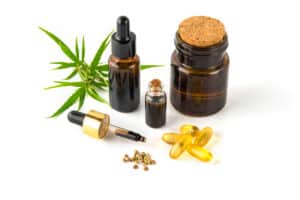The market share of plant-derived drugs and treatments is growing at a fast pace.
This is according to data from Grand View Research, with sales of this booming segment of the pharmaceutical industry finishing 2019 at $131.5 billion.
Moving forward, data from GVR’s study indicates that the market should continue to grow at a compounded annual growth rate of 7% and companies like Cannabotech are spearheading this expansion by introducing a wide range of cannabis-based products including cannabidiol (CBD) products.
Defining botanical pharmaceutical products
Before we dive into more statistics and data about this promising market, it is important to note that only botanical and plant-based drugs approved by top medical regulators can be considered part of any serious research on this segment of the industry as hundreds, if not thousands, of products in the market lack the research to prove that they are effective at delivering what they promise.
Meanwhile, the best way to define botanical pharmaceutical products is to look at the compounds of the drug. A botanical drug is one primarily composed of vegetable materials. Strictly speaking, even though these vegetable substances can be obtained through a chemical process, there should not be genetic or chemical alterations to the raw ingredient or otherwise they would not be considered a botanical drug.
In many countries of the world, botanical drugs are mostly associated with dietary supplements and not as feasible treatments for different illnesses. However, homeopaths have been using plant-made drugs for years to treat various types of diseases.
Meanwhile, the rise of products based on cannabis used for treating diseases including Alzheimer’s and even cancer have once again fueled the public’s interest toward the potential of botanical drugs.
Benefits of botanical and plant-made drugs
Even though botanical drugs are not the most popular, their benefits to patients are many and, in the following section, we summarize some of their most relevant advantages:
Less side-effects: since botanical drugs contain naturally derived actives, the likelihood of an adverse reaction from the body when taking plant-based drugs is significantly smaller compared to the odds of suffering a side effect from a chemical drug.
Lower costs: the production cost of botanical drugs is far lower compared to their chemical counterpart since the components can often be grown at home or at a relatively small greenhouse.
Stronger immune system: in many cases, botanical drugs aid the body in countering the symptoms of a certain illness rather than serving as the cure for it. As a result, most botanical drugs strengthen the immune system and allow it to respond much more effectively in future instances.
How medical-use marijuana is changing the face of the botanical drug market?
The most popular use for marijuana-based treatments in the United States is pain control. Patients who are prescribed cannabis are commonly experiencing severe pain as a result of a surgery, migraine, or trauma-related lesions.
Meanwhile, marijuana has also been prescribed as a relaxant for severe cases of Parkinson, fibromyalgia, and even for patients who have just returned from combat zones as a way to diminish the severity of the symptoms resulting from a post-traumatic stress disorder.
An interesting poll conducted by Medscape in 2018 showed that the majority of physicians in America – around 67% of those surveyed agree that – the use of marijuana for medical purposes should be legal.
This growing support from multiple corners of society has led to the increased expansion of the market for medical-use cannabis, with sales expected to land $16.5 billion by the end of 2021 while forecasts are pointing to explosive growth moving forward at an estimated 23% CAGR.
Moreover, the market for cannabidiol (CBD), which is a well-known component extracted from cannabis, is estimated to grow at a rate of 33.5% per year from 2021 to 2026, with sales expected to land at $4.2 billion approximately according to data from Industry Research Biz.
As for how consumers are perceiving marijuana and CBD consumption, a Gallup poll applied to Americans in 2019 found that 12% of US residents consider themselves active marijuana users while medical-use marijuana is mostly consumed by the millennial generation (42%), followed by individuals from Generation X (23%), and Boomers (18%).
In a similar fashion, people in the United Kingdom have a positive perception about cannabis and its medical uses as reflected by a survey from YouGov conducted in 2018. 75% of the respondents said that doctors should be able to prescribe the substance for medical purposes.
On the other hand, when it comes to presentations, the majority of consumers prefer flower and cartridges while a smaller percentage goes for edibles and concentrates when ingesting cannabis – whether that is for medical or recreational use.
Based on the numbers provided above, it seems that marijuana accounts for at least 12.5% of the botanical drug market at the moment while a progression would show that, at some point, this figure could land somewhere around 30% to 40% in the next five years.
Read more:
Cannabis is becoming the undisputed leader of the botanical drug market
















